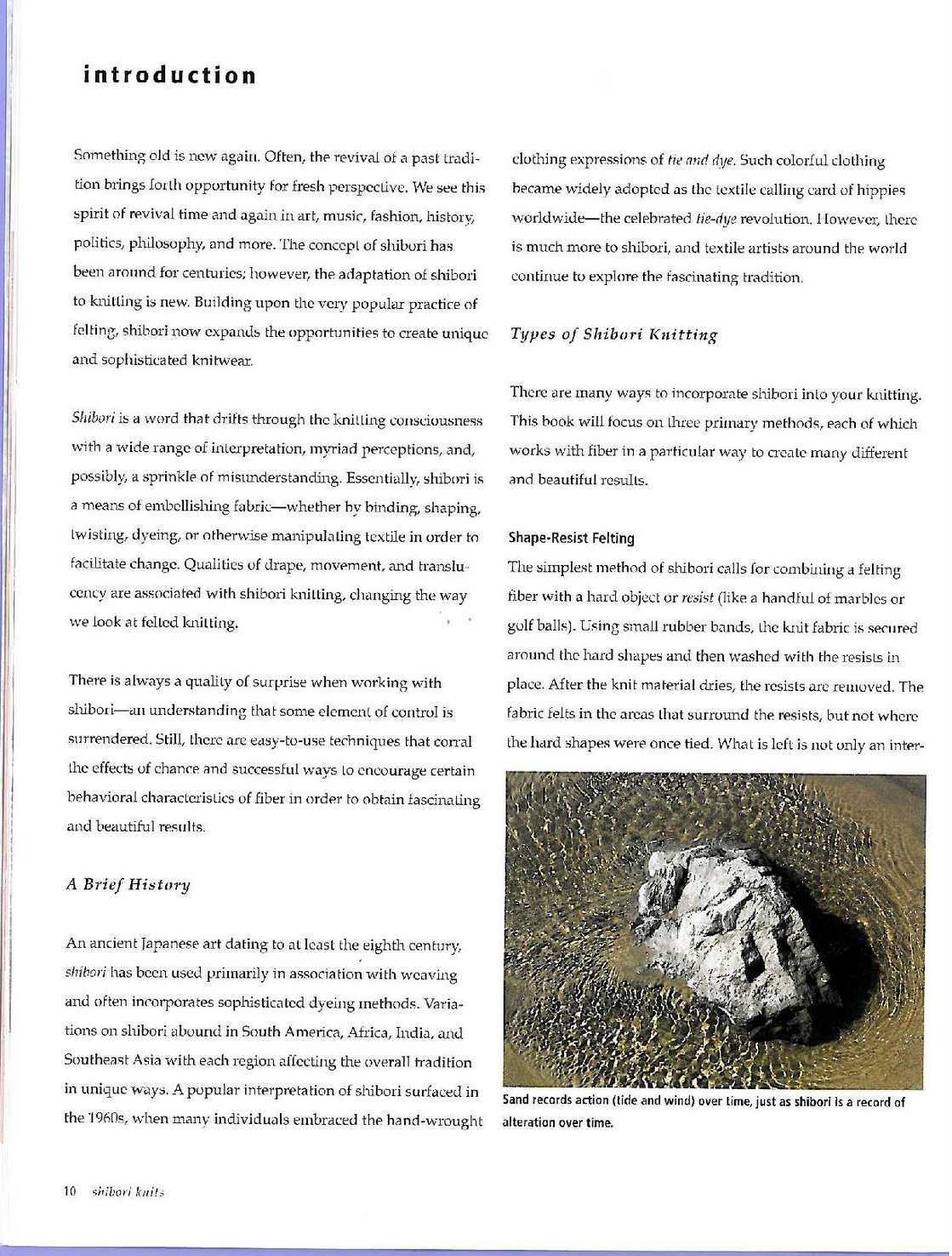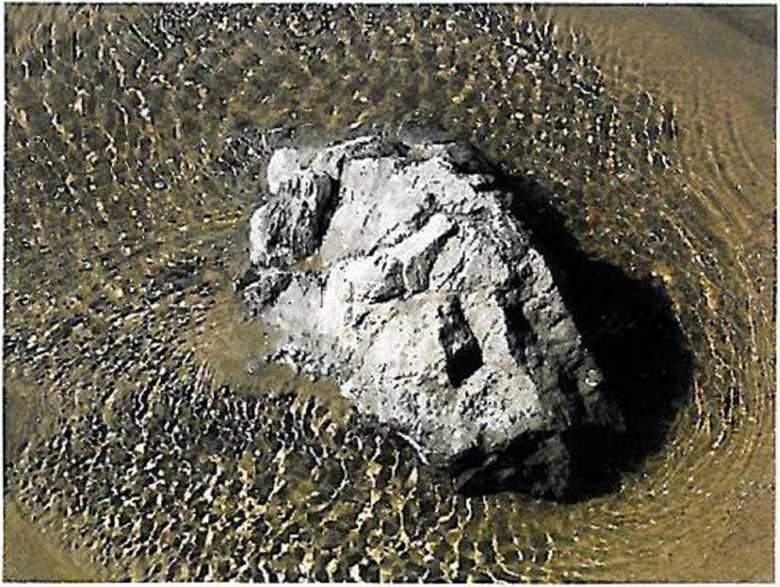19335 S20C 409120813130

i ntrod uction
Something olei is ncw again. Often. the revival oi a past Iradi-tion brings foilh opportunity for fresh pcrspociive. We see th is spirit of revivai Hme and again in art, musie, fashion, history; poiitics, philosuphy, and morę. The concepl of słiibori has been around for cenluiics; however, the adaptation of shibori to knitling is new. Building upon the vcry popular practice of felting, shibori now cxpands the opportunities to create unique and sophistieated knitwear.
Shibori ib a word that drifts through the knitling consciousness vvith a wide range oi inler pręta tion, myriad perccptions, and, possibly, a sprinkle of misimderstanding. Esscntially, shibori is a means ot embcllishing fabric—whether by binding, shaping, twisting, dyeing, or otherwise manip ula ling textile in order to facilitate changc. Qualilies of drape, movement, and translu cency are associated with shibori knitling, changing the way we iook at fellcd knitling.
There is always a qualily of surprise when working with shibori—an understanding that some element of control is surrendered. Still, thcrc are easy-to-use teohniques that corral the effects of chanre and successful ways to cneourage certain behavioral characlcrislics of fiber in order to obtain fascinaling and beautiful resnlts.
A Brief Hi story
An ancient Japanese art dating to at least the eighth cen tury, shibori has bccn used primarily in assonation with wcaving and often inrorporates sophisticatcd dyeing inethods. Varia-tions on shibori abound in South America, Africa, India, and Southeast Asia with each region alTccting the overal1 fradition in uniquc ways. A popular interpretation ot shibori surfaced in the *l%f)s, when many individuals embraeed the hand-wrought clothing expressions of he ntid dye. Such coloriul clolhing hecame widely adopted as the texlile calling eard of hippies worldwide—the celebrated tie-ciye revolution. llowever, thcrc is much morę to shibori, and textile artists around the world continue to explore the fascinating tradition.
Typ es of Shibori Knitting
Thcrc are inany ways to incorporate shibori inlo your knitting. This book will focus on three primary methods, each of which works with fiber in a particular way to cicate many different and beautiful results.
Shape-Resist Felting
The simplest method of shibori calls for combining a felting fiber with a hard objcct or resist (like a handful oi mar bies or golf balls). Using smali rubber bands, the knit fabric is serii red around the hard sluipes and then washed with the resisls in place. After the knit materiał dries, the resisls are removed. The fabric felts in the areas that surround the resists, but not w herc the hard shapes were once tied. W hal is lcft is not only an inter-

Sand records action (tide and wind) over time, just as shibori is a record of alteration over time.
10 shibori knif*
Wyszukiwarka
Podobne podstrony:
S20C 409120813171 bouquet wrap Something ahout knitters andflozoers i ust go togefher. I suppose the
S20C 409120813342 s u b 11 e shibori Shibori knitting has no limits when the door is openeri wide Lo
21002 S20C 409120813440 To hand felt, work in a dean sink. Adjust the water temperaturę to vcry vvar
S20C 409120813423 fortunę cookie scarf Dynamie niowment is one of Ihe many qualities sinbori Level I
41637 S20C 409120813393 s il vous plait kimono In muny ways, Shibori is the knitting apiwalcnt ofnot
więcej podobnych podstron